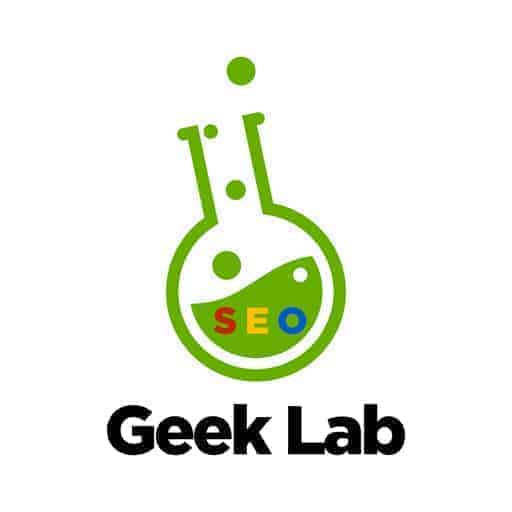
Everybody who involves in Search Engine Optimization needs content for their website. Without content, there is nothing for Google to index and no keywords to rank.
Search Engines need to understand what your content is all about. You need to target the right keywords to gain any rankings in the organic search results.
Armed with the right keywords, you need to make sure that Google can read and understand your content. This is what you call onsite optimization.
The battle between design, UX, marketing and SEO
In larger organizations, there are marketing people, UX, and web designers.
There might even be a dedicated person responsible for SEO. It can often be a constant battle on how a new landing page should look and feel.
In reality, all these people should work together. But often, there are significant differences in how a landing page should look and feel.
Examples of different perspectives
 The marketing people focus on the “Tone of voice.” How well does the content support the unique selling points?
The marketing people focus on the “Tone of voice.” How well does the content support the unique selling points?
Does the web content support content used in other marketing channels? (Print or TV commercials).
A joint statement about SEO optimization would be, “We can’t have a wall of text just because of SEO!”.
The web designer wants to make something remarkable. A minimalistic design with a giant banner “Above the fold” must be the way to go.
The UX person’s focus is to create an exceptional customer journey.
The UX´er split the user experience into different user journeys.
Then he or she may decide to get rid of the visible links or navigation that might confuse the user.
That might lead to a problem for Google finding and indexing the new content.
The frustrated SEO guy/girl

While all these good people come up with brilliant ideas, the SEO guy gets more and more frustrated.
He knows that to rank for anything at all. You need to feed the beast (Google) with the best content possible. In other words, do it better than your competitors.
If your average competitor uses an average word count of 1300 words, and you are only using 300 words in your piece of content?
Then it is almost zero chance to end on page one with a thin piece of content of fewer than 300 words.
The SEO guy also knows that the place “about the fold” is the most prominent place you have. If you splash a banner on top of all the content, you waste your most prominent placeholder.
“An image says more than 1000 words”, correct, but not to a blind! And that is the case with Google.
Google has a limited ability to understand and grasp the meaning of an image.
Sometimes your users might have a hard time decoding your stunning header banner. You want to avoid the user looking at your page with a “What’s in it for me” feeling.
Images can be great. But only if the sender and the receiver have the same mutual understanding and reference.
An example could be a stunning image from a new Marvel Cartoon.
For everybody familiar with the movie, it is obvious what the reference is. For others, it is “a cartoon.”
A title and a headline above the fold would make more sense both for the users and Google?
How does Google see your content?
Google is, at least, not yet able to understand what an image is all about. You can give some strong hints on naming the image and use ALT descriptions to SEO optimize your images.
Designers and UX designers usually have the best intentions. They are trying to make a website minimalistic and easy to navigate.
The best intentions often backfire when it comes to Google.
I usually put it this way” Imagine you have to design a website for a blind person without any arms.”
How would that user experience be? A blind person would have a “text to speech browser.” The computer would read all visible text and read any image descriptions.
If the navigation is not spelled out, the blind person would not know that there was a button. He or she would not know that they need to click to read more.
The same way with Google. If all your relevant text is behind a button, Google would not be able to click on it to read more.
Connecting the dots on the map
SEO is not very complicated – and Google has even made a starter guide for SEO. It is all about working together.
The different skills in the organization need to support each other.
What is the purpose of investing in a giant sparkling neon sign, if you hook it up in the company’s basement.
It might look stunning, but no one except you and your colleagues can see it. Such a neon sign does not drive any customers to your business.
Everybody involved in the content process needs to team up. It is all about giving the users the best experience possible.
For some people involved in marketing, SEO content can be frustrating.
They have the feeling that they are not able to dictate how a text should read.
That is the big difference between written content marketing and SEO content marketing. You need to talk to your users using THEIR language and THEIR search phrases.
If your customers are using a specific keyword to find your product, you need to use the same keyword.
You are not going to rank for that keyword if you change your product name to something no one is searching for.
The 10 step SEO content plan
- What is your USP (Unique Selling Point)
Ensure that you target keywords that support your USP´s and match your “tone of voice.” - Create high-quality content:
Examine your competitor’s content – what are they addressing, can you do it better? Can you spot the customer’s pain or gain? - Make your content visible for Google and your users:
Don’t hide the critical content behind buttons or dropdowns that Google is not able to click at - Use “Above the fold”:
Put your most important content above the fold. Make sure that the user/Google knows what this URL is about - Use images the right way:
There is nothing wrong with using images. Make sure they support the written content and make sense for your context. - Connect your content by internal links and navigation:
Don´t publish content without any internal links. Google is usually not able to locate and index the content. - Avoid heavy use of javascript:
Google is always trying to render your content, but heavy use of javascript can be a real challenge. - Think mobile-first:
If your website is not performing well on mobile, you are in trouble. Google has a focus on mobile-first - Page load speed:
It is mandatory to understand how vital page load speed is!. - Test and improve:
Before implementing an SEO landing page, you might consider running a test. You can use Google Ads to drive a limited amount of visitors to see how well your new URL performs.
Wrapping it all together

Granted, us SEO geeks might seem to be hard to work with. We are always screaming, “don’t do that,” “Why did you do that” or “You NEED to change that,” “What keyword are you targeting?”.
But don’t be mad at us, work with us! We want to help you achieve your goals! We also want to see the beautiful design, content that sells, and generates a lot of sales.
Our biggest struggle is late involvement in new content. It is frustrating when a page is already live, and someone says, “oh, we better ask the SEO guy as well.”
We would be SO happy if we can get involved as early in the process as possible.
Our colleagues get annoyed when we ask them to make changes in the text. Even we inform them that Google is not able to index the content.
If you ask for a complete rewrite of the content, you will not win the title of “Colleague of the month!.
That is a lot of wasted resources – it is like if you want to make a good impression in school and write an essay in advance.
How would you feel when you handle your essay, and your teacher tells you that you did a great job. – But the entire topic is wrong!.
Your teacher asks that you completely rewrite it. That is a very frustrating feeling of wasted work and effort.
Let’s avoid that! Involve the SEO guy (or girl) from the beginning. Tell us about your thoughts and goal, and we would be happy to arm you with the best keywords we can find.
We are on the same page! Let us work together!.
If you share our interest in SEO, remember to sign up for our newsletter. We share tips, strategies, and run various tests – and you even get our free Ebook SEO IN 2020.
